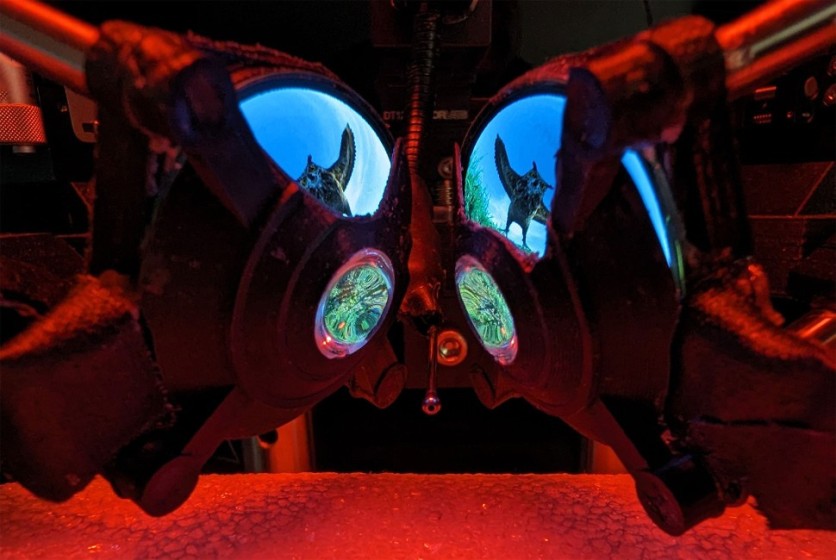Scientists have been utilizing virtual reality setups to examine brain activity in laboratory mice for an extended period. Traditionally, this involved placing mice amidst flat displays, a method with evident constraints in reproducing a lifelike environment.

VR Goggle for Mice
In a bid to enhance immersion, a team from Northwestern University has innovated by crafting miniature VR goggles that not only cover a mouse's face but also a significant portion of its body.
Engadget reported that his groundbreaking development enables the simulation of overhead threats for the first time, all while mapping the mice's brain activity.
The system, named Miniature Rodent Stereo Illumination VR (iMRSIV), distinguishes itself from human VR headsets by not being affixed to the mouse's head. Instead, the goggles are strategically positioned at the front of a treadmill, enveloping the mouse's entire field of view as it runs in place.
Detailing the breakthrough, John Issa, one of the co-primary authors of the study, elucidated the process involved in creating a bespoke holder for the goggles. The comprehensive optical display, encompassing both screens and lenses, encircles the mouse entirely.
Introducing New Approach
Over the course of the last 15 years, mice have been subjected to virtual reality (VR) systems, according to Daniel Dombeck, the senior author of the Northwestern University study.
Unlike the traditional use of large computers or projection screens, which allows the mice to perceive their surroundings akin to humans watching a TV in their living room, the innovation involves equipping the mice with VR goggles, providing an immersive experience similar to Oculus Rift.
This new approach eliminates the cues of the external environment, offering mice a fully projected scene in each eye and, importantly, addressing the previous lack of depth perception in their VR experience.
Dombeck and his team discovered that mice wearing the VR goggles exhibited brain activity similar to freely moving animals, with faster engagement in scenes compared to mice using traditional VR systems.
The goggle-wearing mice demonstrated quicker learning in training paradigms, suggesting a more natural interaction with the environment. The researchers successfully used the goggles to simulate overhead threats, a capability lacking in existing systems.
By projecting a dark, expanding disk into the top of the goggles, mimicking a potential predator from above, the team observed common responses in mice, such as increased speed or freezing. Future studies aim to explore scenarios where mice act as predators, observing brain activity during pursuits like chasing a fly.
Also Read : Researchers Genetically Engineer First Mice That Get Human-Like Version of COVID-19-Here's What Happened
In contrast to existing cutting-edge setups that merely encircle mice with computer or projection screens, the recently developed goggles mark a significant leap forward in technology.
The limitations of current systems include mice being able to perceive the lab environment through the screens and the inherent inability of flat screens to convey three-dimensional (3D) depth as posted in the journal Neuron.
Additionally, these systems face challenges in simulating overhead threats, such as approaching birds of prey, due to the difficulty of mounting screens above the mice's heads. The newly introduced VR goggles effectively address these challenges.
Furthermore, as virtual reality gains widespread popularity, these goggles have the potential to provide researchers with fresh insights into the adaptation and reactions of the human brain to repeated exposure to virtual reality.
Related Article : One Night of Sleep Deprivation Can Fight Depression for Days, New Research in Mice Finds





